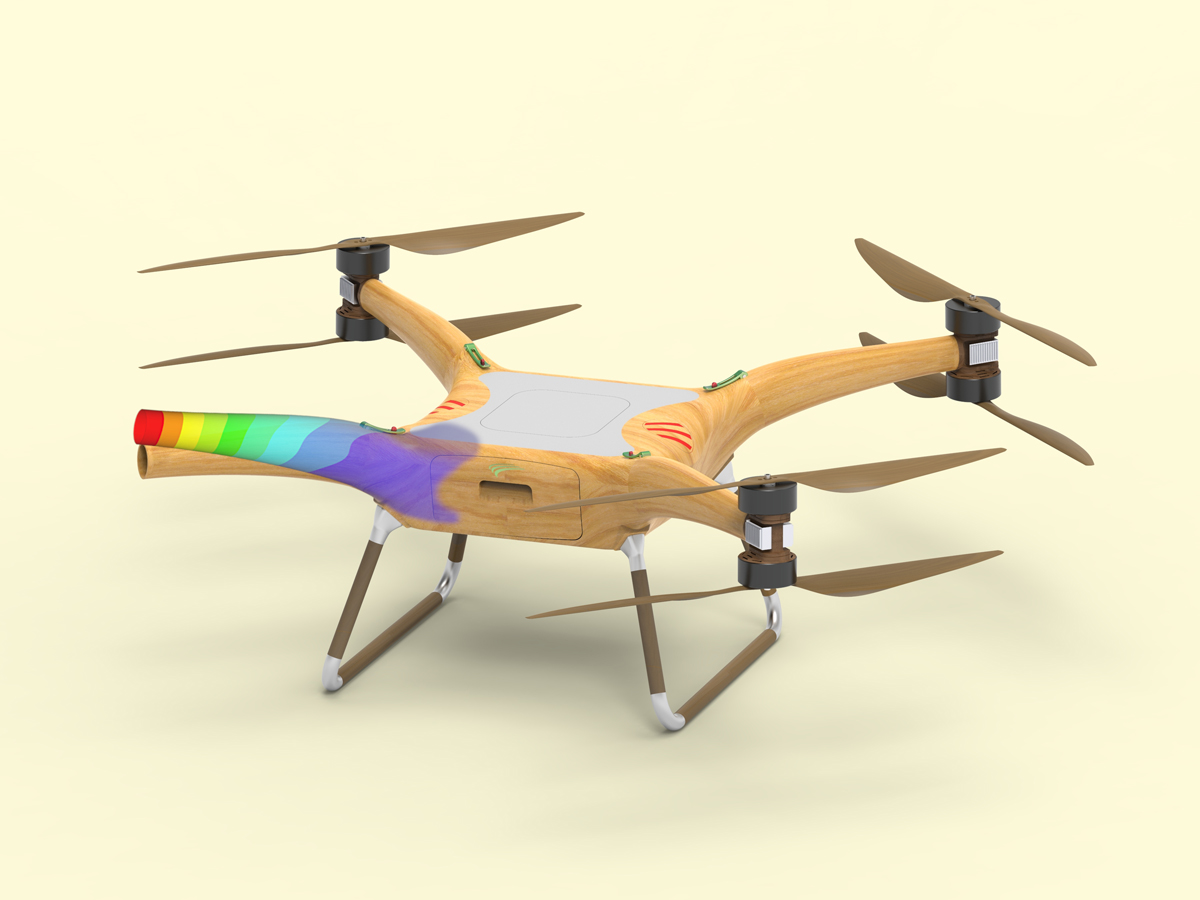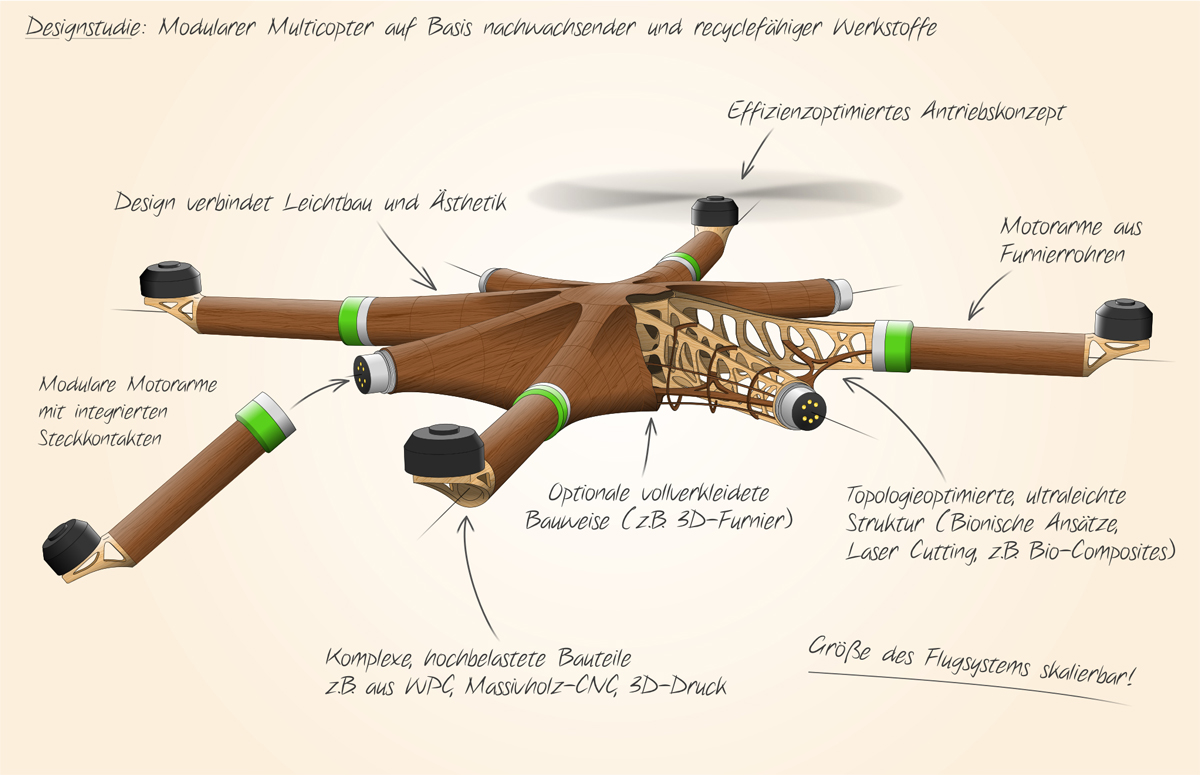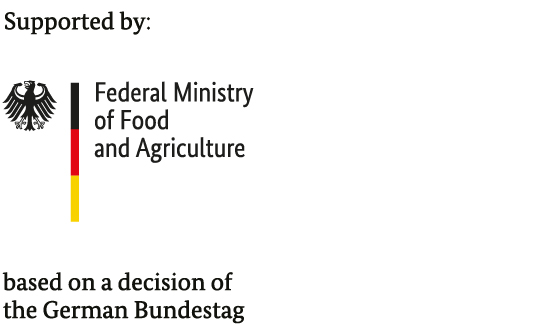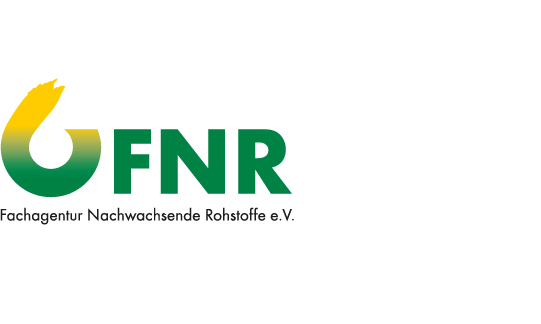For virtually all multicopters available on the market, conventional fiber-reinforced plastics are utilized. These usually consist of carbon, glass or aramid fibers as well as petrochemical polymers. Their high specific strengths and stiffnesses considerably exceed the moderate load requirements of multicopters.
The task of the Fraunhofer WKI is to develop and manufacture materials which are more sustainable and which adequately fulfill the load requirements of multicopters. The focus is thereby being placed on three classes of materials:
1. Laminated materials made from rotary cut and 3D veneers for load-bearing components
The veneer bonding is carried out as extensively as possible using adhesives – developed by the project partner Jowat – on the basis of renewable raw materials. The glued veneers are processed into molded parts in a vacuum press. The design of suitable molding tools is also part of the project. Furthermore, we are testing bio-based varnishes and paints concerning their suitability for coating the veneer materials and are optimizing them with regard to the specific requirements of the application for multicopters. In order to produce the lightest-possible structures, the components are cut out in accordance with the load path.
2. Thermoset-based natural-fiber-reinforced plastics (NFRP) for load-bearing components
We test the applicability of natural fibers such as flax and bio-based epoxies as well as the processing in press and vacuum-infusion procedures.
3. Thermoplastically processable natural-fiber-reinforced bioplastics
In contrast to the aforementioned material classes, thermoplastically processable natural-fiber-reinforced bioplastics are generally not suitable for load-bearing structural components on account of their pronounced creep behavior. They can, however, be processed by means of injection molding. This enables complex component geometries. A further advantage is their excellent recyclability, as the materials can be shredded, melted down and processed into new products after their service life. We are developing suitable compounds from natural fibers and biopolymers and are utilizing them to produce multicopter components. One focal point is the selection and testing of suitable additives in order to ensure UV stability, durability and the capacity to withstand the wide temperature range during the service-life phase.
In order to optimize the materials, we carry out diverse tests, amongst others with regard to stiffness and strength as well as water absorption and swelling. The developed materials will be utilized in the production of multicopter prototypes.
The overall concept for the multicopter system originates from Leichtwerk Research GmbH, which is coordinating the joint project and undertaking the aeronautical development aspects. In order to test and optimize the multicopter system, extensive operational and flight tests are being performed.
With our expertise in the field of materials development and process technology, we are providing a contribution towards the achievement of the following overall goals of the joint project:
Material and energy efficiency through a reduction in mass
The weight of multicopters needs to be reduced. In part, this can be achieved simply through the utilization of renewable raw materials. Intelligent, lightweight-construction-oriented structural designs should lead to further weight savings.
Modularity and scalability
Various components will be designed to be easily interchangeable and compatible with one another (plug-and-play functionality). Users can consequently utilize the appropriate component for each operational scenario, thereby creating the most efficient configuration. As a result, they will only need one system instead of several flying units. Furthermore, this modularity is to be combined with partially scalable structural designs, which, by selectively scaling up or down, can enable an entire product family with reduced development expenditure.
- Ease of repair
- Holistic sustainability concept from production through to recycling
- Cost efficience
- Suitability for series production
 Fraunhofer Institute for Wood Research
Fraunhofer Institute for Wood Research 


